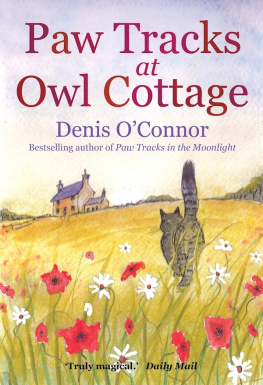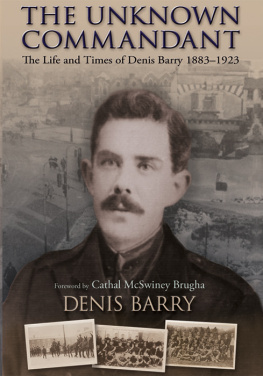I wish to dedicate this book to the memory of my uncle, Captain John Watson of the Church Army, whose library of the classics was a readers treasure chest for me.
This book is also for Catherine, my wife, without whose loving support it would not have been written.
The heart has its reasons which reason does not know.
Blaise Pascal, 1688
M y extraordinary life with Toby Jug, the hybrid Maine Coon cat whose companionship and love gave me such happiness during my twenties and thirties, sadly came to an end in 1978 when he tragically died. We had enjoyed life together since I had rescued him as a tiny, sick kitten lying alongside his dying mother and brother. Owl Cottage, with its beautiful garden and rural setting, became our refuge and sanctuary over the eventful years we shared together. After his death the poignant memories of him were too sorrowful for me to carry on living there.
In 1980 I moved to Newcastle where I already had been appointed to a lectureship at the University of Newcastle upon Tyne. Later I worked at Durham University tutoring students in Educational Studies until I retired in 2000. In 1998 Catherine and I were married and since we were both contemplating early retirement we began to look for properties in rural areas because of our attachment to North Northumberland. Fate took us in hand and I was able once more, with Catherine at my side, to return to Owl Cottage and revisit the home where in my younger life I had spent such happy and memorable years with the cat called Toby Jug, whose adventures inspired Paw Tracksin the Moonlight.
Returning to live in Owl Cottage at West Thirston was for me the consummation of many years of longing to escape the city for life once more in the countryside. West Thirston is one of a group of hamlets, extending eastwards to the town of Amble and the North Sea, which lie astride a rocky ridge above the River Coquet. Owl Cottage is built on a site adjoining a minor road which leads westwards to Linden Hall, Rothbury and beyond. No doubt the area occupied by the cottage has witnessed many habitations throughout the ages but the present structure is built almost entirely of stone and dates from around the middle of the nineteenth century. The front of the cottage runs parallel to the road, leaving the back, which faces south, secluded and private.
The garden is extensive and comprises over fifty trees of various kinds including oak, beech, whitebeam and birch. There is also a small orchard of apple, pear, plum and nut trees, and a meandering swathe of grass bordered by flowering shrubs and flower beds, giving an overall effect of a woodland glade. Wildlife is welcome here and thrives in the pesticide-free environment. My wife Catherine and I refer to the garden as our Shangri-La because of its beauteous tranquillity and natural appeal. There are stories from local folk who say that it is enchanted and inhabited by fairies, although we cannot confirm this from our own experience. Yet on summer nights, whilst songbirds are singing their songs and slanting sunbeams create green-grassed areas of golden meadow, there is an enraptured feeling about the garden at Owl Cottage.
It is certainly a wonderful place for cats and has been much loved by them, not least by our four Maine Coon cats respectively named, according to age, Pablo, Carlos, Luis and Max. These special and affectionate cats comprise our family and their unique and fascinating personalities and activities form the basis of this true to life account of our lives together with them at Owl Cottage. In many respects this book is the continuation of the story that began in Paw Tracks in theMoonlight because returning to the cottage and describing the adventures of our present cat family have revived the memory of some additional tales of the legendary hero of Owl Cottage. After all, Toby Jugs spirit endures in every tree and stone there.
P ablo was the first kitten to live in Owl Cottage since the death of Toby Jug and we welcomed him, quite literally, with open arms. He was a pedigree Maine Coon. In appearance he was surprisingly large for such a young kitten, with a pointed face and extra large ears. His front paws were enormous and he had a long fluffy tail. His eyes were golden brown and his coat a cinnamon colour like oak leaves in autumn, with some darker markings which would become more distinctive and elaborate as he matured. Pablo had the build and markings of his ancestor, the Norwegian Forest cat.
On his birth cum pedigree certificate he was formally named Pablo Picatsso, son of Billyboyblue and Huffenpuff, and was officially designated a brown tabby. He was born in October 1999 and given to me as a present by Catherine, my wife, who had lived at Owl Cottage with me since we had bought it in 1998. Pablo proved to be a wonderful cat, affectionate and lovable, and he provided us with many fascinating insights into cat behaviour. But perhaps first I should relate how it happened that we acquired Pablo in the first place and how I and Catherine came to be living once more at Owl Cottage. Despite my earlier protestations at the time deeply felt and firmly held at long last I had returned to the home where Toby Jug and I had been so happy in the past.
It all began in the spring of 1997 when Catherine and I decided to take a holiday in the north of Crete. One beautiful sun-filled morning, as we sat on the veranda of our apartment looking out over the azure blue Mediterranean, we heard a cat calling. It was not a distress call, just the kind of cat-talk that some felines make when they see something interesting or wish to express their feelings. I looked over the grey rocks and scrub that extended away from the holiday chalets. In the distance was the mountain known locally as Zorbas Rock, which reputedly was the location for the famous Greek dance sequence performed by Anthony Quinn in Zorba the Greek.
Suddenly, I spotted a small figure scurrying straight towards us. In a moment a neat and very petite charcoal-grey, short-haired she-cat introduced herself to us. She was obviously accustomed to people, since she immediately commenced purring and brushed herself against us in the most affectionate manner. I realized at once that she was focused on an agenda which was meant to manipulate us. No doubt she was in the habit of exploiting the charity of kind-hearted holiday-makers. This greeting display by the cat undoubtedly served her purpose which was to remind us of our obligations as hosts. And so it was that a late breakfast of corned beef and boiled ham was served up to her and very well received. I admired her social skills and wondered just how many other tourists had fallen under her spell and been cajoled into offering handouts.
My assumptions about her motives were soon confirmed because she came to visit us every day for the rest of our stay and we became quite fond of this dainty little beach cat. Each time we fed her we were, of course, rewarding her friendly behaviour and so, in terms of psychological theory, reinforcing her activities. Likewise she, this clever little cat, was reinforcing my act of feeding her by jumping on my knee and purring her thanks as a reward for me. Cats are great manipulators of humans and our guest cat proved no exception to this rule. She would arrive either mid-morning or teatime and, having been fed, she would linger next to us, sometimes gracing one of our laps as we relaxed and watched the sun go down. For the moment she had adopted us.













